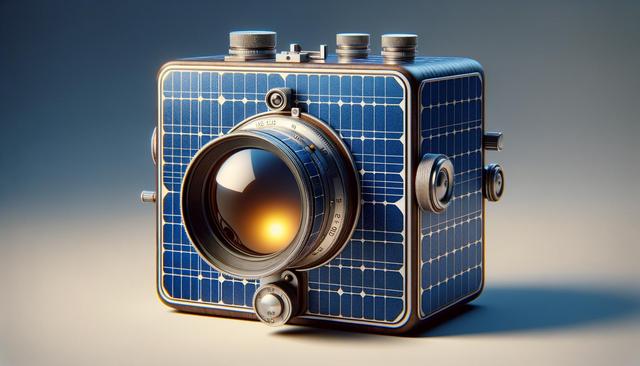How Wireless Solar Security Cameras Work
Wireless solar security cameras for outdoor usage operate by combining two key technologies: solar energy harvesting and wireless data transmission. A small solar panel, usually integrated or mounted nearby, captures sunlight and converts it into electrical energy. This energy is stored in rechargeable batteries, which provide consistent power to the camera even during cloudy days or at night. Since the camera is wireless, data is transmitted via Wi-Fi or mobile networks, eliminating the need for physical cables. This setup allows the camera to be installed in remote or hard-to-reach locations without the hassle of wiring or reliance on electrical outlets.
These cameras come with built-in motion sensors, night vision, and even two-way audio communication in some models. The inclusion of smart features like mobile app integrations and real-time alerts further enhances their usability. All these elements work together to offer a convenient, energy-efficient solution for outdoor surveillance.
Advantages of Solar-Powered Surveillance
Solar CCTV cameras offer a range of benefits for homeowners, businesses, and property managers. First and foremost, they reduce dependency on the electrical grid, which can lead to significant energy savings over time. Because they are self-powered, these cameras can continue to function even during power outages, ensuring uninterrupted security coverage.
Other notable advantages include:
- Eco-friendliness: They use renewable energy, which helps reduce the carbon footprint.
- Cost-effectiveness: Lower operational costs due to reduced electricity usage.
- Flexibility: Can be installed in areas without electrical infrastructure.
- Low maintenance: Fewer components mean fewer points of failure.
For those seeking reliable outdoor monitoring without recurring energy costs, a wireless solar security camera offers a compelling option.
Installation Considerations
Installing a wireless solar security camera for outdoor use requires some planning to maximize performance. The most critical factor is sunlight exposure. The solar panel should be positioned where it receives maximum direct sunlight throughout the day, ideally facing south in the northern hemisphere. Obstructions like trees, buildings, or overhangs can reduce the efficiency of the solar panel and should be avoided.
Other installation factors to consider include:
- Mounting height: Cameras should be high enough to avoid tampering, but low enough to capture clear images.
- Wi-Fi range: Ensure the camera is within the signal range of your wireless network or uses a cellular option where Wi-Fi is unavailable.
- Battery capacity: Choose a model with enough battery storage to handle multiple cloudy days.
Proper installation not only improves the effectiveness of the camera but also prolongs its lifespan and ensures consistent performance.
Use Cases and Applications
Wireless solar security cameras are versatile and can be used in a wide variety of settings. In residential areas, they are commonly installed to monitor driveways, backyards, and entryways. Farmers and rural property owners appreciate their ability to monitor livestock, barns, and equipment without needing power lines. Businesses use them for perimeter surveillance, parking lot monitoring, and construction site security.
Some practical applications include:
- Remote cabins or vacation homes
- Outdoor event venues
- Public parks and recreational areas
- Border or environmental monitoring zones
Regardless of the location, these cameras provide an easy-to-deploy option for enhancing security without the need for extensive infrastructure or maintenance.
Maintenance and Performance Tips
While solar-powered surveillance systems are generally low-maintenance, a few simple practices can help ensure long-term performance. Regularly cleaning the solar panels can prevent the accumulation of dust, bird droppings, or debris that may block sunlight. Checking battery health periodically is also important, especially in regions with variable weather conditions.
Other tips to maintain performance include:
- Updating firmware periodically to benefit from security patches and new features
- Checking camera lenses for obstructions or dirt
- Testing motion sensitivity settings to reduce false alerts
- Inspecting mounts and brackets for stability after storms or high winds
With minimal effort, users can enjoy reliable, long-term use from their outdoor wireless solar security camera systems.
Conclusion
For anyone looking to enhance outdoor security while embracing sustainable technology, a wireless solar security camera presents an efficient and flexible solution. Whether used for home surveillance, rural property monitoring, or commercial applications, these systems provide a practical alternative to traditional, wired setups. With proper installation and occasional upkeep, solar CCTV cameras can offer peace of mind and energy savings in equal measure.








